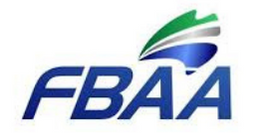Financial distress can be overwhelming, especially when terms like “insolvency” and “bankruptcy” start to surface. For Australian businesses, understanding the differences between these two concepts is crucial for making informed decisions. In this blog, we’ll break down the key distinctions between insolvency and bankruptcy, their implications under Australian law, and how to navigate each situation to safeguard your business.
What is Insolvency?
Insolvency occurs when a business is unable to pay its debts as they come due. This situation can arise from cash flow problems, declining revenue, or excessive debt. Insolvency in Australia is not necessarily the end of your business; it’s a warning sign that immediate action is needed to avoid further financial deterioration.
Types of Insolvency
- Cash Flow Insolvency: This occurs when your business has more liabilities than available liquid assets, making it impossible to meet immediate obligations.
- Balance Sheet Insolvency: This happens when the total liabilities of your business exceed its total assets, even if the company is still able to meet its current debt payments.
What is Bankruptcy?
Bankruptcy is a legal process that applies primarily to individuals or sole traders in Australia when they cannot repay their debts. For companies, the equivalent process is liquidation or voluntary administration. Unlike insolvency, which is a financial state, bankruptcy is a formal court proceeding that often results in the liquidation of assets to repay creditors. It’s typically considered a last resort when all other options, such as restructuring or negotiating with creditors, have failed.
Types of Corporate Insolvency Procedures in Australia
- Voluntary Administration: A process where an external administrator is appointed to manage the company’s affairs, aiming to either save the business or achieve a better return for creditors than immediate liquidation.
- Liquidation: The process of winding up a company’s operations, selling off assets, and distributing the proceeds to creditors.
- Receivership: This occurs when a secured creditor appoints a receiver to recover the funds owed to them, often resulting in the sale of company assets.
Key Differences Between Insolvency and Bankruptcy
- Nature: Insolvency is a financial condition; bankruptcy is a legal process (or liquidation for companies).
- Process: Insolvency can lead to restructuring or other debt management strategies, while bankruptcy or liquidation involves legal intervention and potentially the closure of the business.
- Impact: Insolvency signals financial distress and can be managed internally or with external help. Bankruptcy or liquidation has long-term implications, including potential loss of business assets and damage to your credit rating.
Which Path is Right for Your Australian Business?
The path you choose depends on your business’s financial situation and long-term goals. If your business is insolvent, it’s crucial to act quickly by exploring restructuring options, negotiating with creditors, or seeking professional advice. At apickle, we specialise in helping Australian businesses navigate insolvency with strategies designed to restore financial health without the need for liquidation.
However, if your business is already deeply in debt with no viable options to recover, liquidation or voluntary administration may be necessary steps. Our team at apickle can guide you through the process, ensuring you understand your rights and obligations while helping you minimise the impact on your future endeavours.
In A Tight Spot? We’re Here To Help
Understanding the difference between insolvency and bankruptcy (or liquidation) is vital for making informed decisions during financial distress. While insolvency can often be managed with the right strategies, liquidation is a more drastic measure with significant consequences. No matter which situation your business faces, apickle is here to help.
At apickle, we’re proud to help Australian businesses overcome financial challenges through tailored business debt solutions, expert debt negotiation, and strategic debt restructuring. Don’t let financial distress hold your business back—reach out to us today. Our experienced team is ready to guide you through every step, providing the support you need to regain control and focus on your business’s growth and success. Contact apickle now to start your journey toward financial stability.



